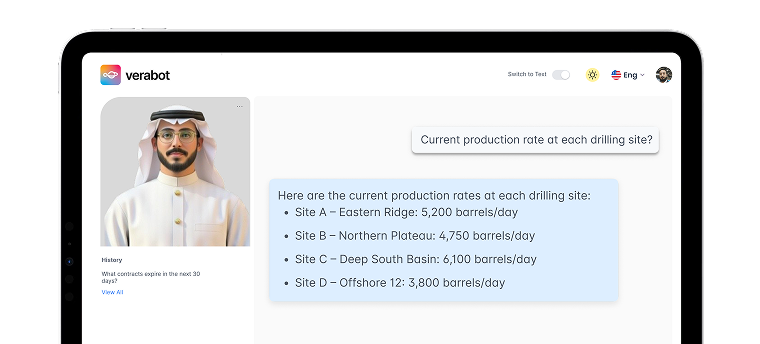Businesses employ various tactics to improve their sales. Sometimes, these work, and other times, they backfire. That is because businesses spend less time thinking about appropriate pricing and testing scenarios.
Pricing is a rather peculiar dimension—it can have a positive or negative impact on the buyer and consumer, and hence, it needs more attention and attention to detail than it gets.
For online businesses and brands that deal in retail, an adequate pricing strategy or a decent pricing structure is even more critical because of easy access to competitors.
This is because in the digital realm, the reach is increasing with every passing day, reaching more and more people around the globe, and while there might never be a perfect pricing strategy, one can work towards optimizing it.
A study on Statista.com states that retail sales in the US amounted to a staggering $5.2 trillion dollars. This is expected to increase by over 56%, amounting to more than $8.1 trillion by 2026.
So, with such massive numbers, if brands that deal worldwide don’t have the right pricing to offer, they might be missing out on a lot.
The solution? Retail price optimization. It is a process where data is gathered and compiled to draw conclusions to make the pricing as good as possible. Retail consultancy solutions can be a viable option too.
Let’s dive deeper to learn more about it.
What is Retail Price Optimization?
Retail price optimization is the process of achieving balance when pricing your products. It cannot be too high, so you don’t lose customers, and neither can it be low, or will the business have too low-profit margins.
Price optimization in retail is done by analyzing the data by putting it in the statistical models to extract useful information to understand what the reaction of customers will be to various price settings. It can have various touchpoints or filters that make it convenient to get the right results.
Price optimization usually leads to price management, which is essentially the process of issuing and setting new prices, communicating them through the right channels, and ensuring necessary changes.
Benefits of Retail Price Optimization
Price optimization is a technique that is used by a lot of brands around the world. This technique offers multiple benefits, which is why brands choose to employ it to identify the right pricing, incorporating multiple factors and ensuring better outcomes.
Let’s quickly walk through some of the benefits of price optimization in retail.
· Convenient Product Catalog Management
Product catalogs can often become difficult to deal with. However, the right retail price optimization tools can turn the scenario in your favor. It is the hub where everything can be done through a single window, including price monitoring, and boosting your sales to the optimal level, so you get to manage everything easily.
· Ability to Predict Changes
Implementing a price change as a process of retail pricing optimization, you need to be absolutely sure about what you are going to do. The more you are firm on your decision, the better you can predict what is going to happen, which leads to efficient decision-making, eventually resulting in increased profit margins.
· Save Time for Other Tasks
The most significant option for businesses around the globe is that it can save you a lot of time for other important tasks. Optimizing the price for the retail industry is not an easy task and requires the stakeholders to extensively study, evaluate and then push the prices to the market, and through software, all of this can be done easily.
· Price Customizations Based on Demographics
Demographics play the most important role in your pricing structure. From knowing the age to the location to the profession, everything must be incorporated to optimize the retail price. In the price optimization process, this is another benefit that businesses get. This way, businesses learn more about their customers to target them better.
· Data-Driven Decisions
Data-driven decisions are another advantage of the price optimization technique. It helps in making safer, more informed, and more concrete decisions that help them to achieve bigger and better. The more data you have, the more detailed answers you will get, and the more comprehensive your pricing strategies can devise.
Price optimization in retail is not just for the brands with mass production facilities and extravagant budgets—it is also for companies that are mid-sized or even small, and by leveraging the power of data analytics services and business insights, it can really define the future for a retail business.
Challenges in Retail Price Optimization
Nothing great in this world comes easy. The same is the case with price optimization. Despite being an amazing technique that can help businesses progress faster, it is not so easy to implement.
Price optimization in retail has a few challenges. Let’s have a quick look at them.
· Data Collection & Compilation
Data collection and compilation is the initial step where the required data is collected and compiled. However, usually, the required amount of data is not available, or there is insufficient data to extract the right information. If the right amount of data is available, it lacks actionable data points that can help retailers leverage the points of data.
· Data Issues & Delays
The availability of useful and right amounts of data is not the end of the game. There are more challenges that trouble businesses and hinder their progress. The issues with data delays can stop businesses from making timely decisions, which may allow the competitors to take the lead and capture market share swiftly.
· Inappropriate Formatting
Inappropriate product formatting has a critical role in price optimization as it makes it quite difficult for the user if it is not in the right place. Businesses must understand the type of customers they attract and design, pack, and distribute their products accordingly from the right channel to maximize profits; however, it remains a big challenge.
How Artificial Intelligence and Machine Learning Can Help in Retail Price Optimization?
Gone are the days when retailers made manual efforts to see their businesses progress.
Today, technologies such as artificial intelligence and machine learning, coupled with data analytics services, significantly help in price optimization in retail.
Machine learning technology ensures that the data used to get the results produces results with accuracy with minimal chances of error, and artificial intelligence helps in making correct decisions.
Price optimization in retail can often get difficult, laden with delays and problems. But with technologies like artificial intelligence and machine learning, this process can be made easy and precise.
Retailers are taking advantage of machine learning algorithms to gain unprecedented insight into the ever-evolving market. With this technology, the data gathered is more comprehensive and tailored towards their desired outcomes compared to traditional models.
Powerful variables such as weather patterns, historical trends, promotional activities, and supply levels can all be analyzed for a clearer idea of how best to move forward with decisions that drive success.
Solutions for price optimization in retail leverage the technology to deliver maximum ease to retailers and help them identify the most suitable price ranges by relying on the available information as well as intuition.
Here, by using data analytics and business intelligence services, businesses can fast-implement their solutions and pave the way for their endeavors.
Retail Price Optimization Software: What Must It Have?
The modern-day price optimization approach is not manual and requires a smart digital solution to handle the tasks.
So, the preferred method of approaching price optimization is through software solution that is either customized to your needs or provides all the solutions that you need in a solution to get the ideal outcomes.
In the growing retail landscape, the increasing complexity has forced us to depend more on technology. With that in mind, here are a few features your price optimization software must have.
· Real-Time Monitoring
Retail price optimization software must have real-time price monitoring features. Software solutions built for this purpose usually offer price monitoring, but only a few have real-time monitoring availability because, in most cases, historical data cannot be of much use.
· AI-Backed Processing
Artificial Intelligence is a technology that cannot be skipped when building a retail price optimization solution. Progressing smartly is vital for business, and AI, along with ML, provides the impetus needed for them to stay ahead of the curve and drive value.
· Smart Insights
Smart insights extracted from processing data allow businesses to learn deeply about their consumers, market behavior, and trends—and that is why having a solution that renders smart insights in a timely manner can greatly benefit your business in going the right way.
· Automated Price Updates
A good price optimization software for retail must have an automated price updating option. Not that it would do this automatically but based on some pre-defined rules that allow you to improve your pricing strategy and churn out better results.
· Testing Scenarios
Testing is significant before publishing your new pricing structure. No matter how perfect the pricing might be, a good software solution must have the ability to perform various tests and provide results accordingly for ideal results.
There are several other features that might be included in your retail price optimization software; however, that mostly depends on what your business is and how your requirements vary. An experienced team can always build perfect retail price optimization software with all the features you want.
Takeaway
There are multiple retail price optimization tools that you set up and use to optimize your pricing. However, having a personalized digital solution for your business is always better.
Developing specific software for your requirements can really help your business kick off, fly high and maximize your profits, helping you scale by growing your margins and capitalizing on the opportunities on offer.






